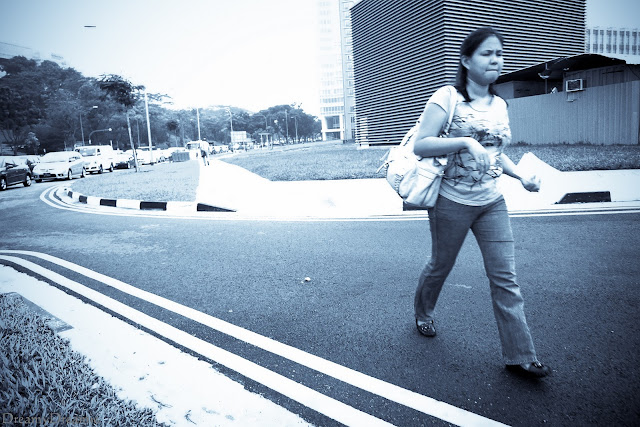Happened to have chance to go to Melaka, Malaysia on 16/9/2011 after getting some good deal from website (Melaka is entered to become one of the World Heritage site in the world in year 2008, so i think a lot of story to tell in this place). Shoot some street portrait using my Panasonic Lumix G1 and the lovely Canon FD 50mm F1.4 lenses.
Before i proceed to the street portrait talk, i would like to share some of my experience in Canon FD 50mm F1.4 lenses. During the 2days 1nite trip, i forced myself to use this lenses. Even though the lenses is F1.4, due to the equiv. focal range of 100mm (by rules of thumb, the shutter speed has to be reciprocal of focal length which is 1/100sec to prevent the image blur caused by handshake), i found this lenses is quite hard to do photo shooting in low light condition. In low light condition, it's very easy for the shutter speed to be 1/20sec, and the sharpness of the lenses is compromised.
Just to have a quick compare of my Lumix 14-42mm F3.5-5.6 lenses, when i shorten the equiv. focal length to 28mm, a shutter speed of 1/20sec still give me a reasonable sharpness (i think it's because of the Mega O.I.S, light weight of the lenses and the short focal length)
Overall, I think that i face some difficulties in using the canon FD 50mm F1.4 in low light condition because of the lenses heavy weight, long focal length and without Image Stabilizer. Nevertheless, this lenses actually produce very creamy bokeh effect and high resolution which is totally impossible from the lumix 14-42mm lenses. I really enjoy using this FD lenses in bright outdoor shooting, because it gave me the sharpness and the bokeh effect that i like.
My experience in using this lenses in streetphotography :
1. step down the aperture to F2.0, you will get reasonable bokeh effect whilst easy to do focusing. F1.4 will give you very shallow depth of field which will make you very difficult in manual focus especially when you want to capture "decisive moment" which happened in a very short time frame.
2. use ND or circular polariser to help to reduce the shutter speed as sometimes my shutter speed reach 1/4000sec but the whole image still overexpose due to the reason of fast aperture that i am using.
3. Use Viewfinder ! It's very important of using high quality EVF of 1.44 Million dots in my Lumix G1. It's added extra stability and ease the process of manual focus.
(Most of the photo taken here had been cropped for the intended composition, so the quality of the photo may drop somehow, but the bokeh effect still very good.)
(to be continued ...)




















